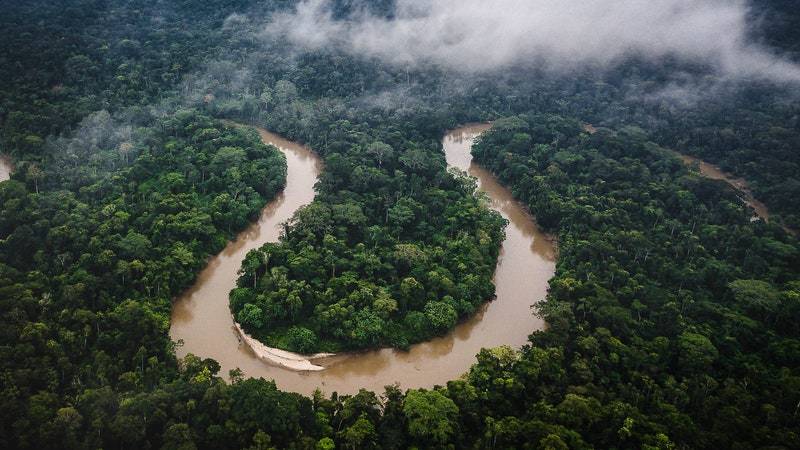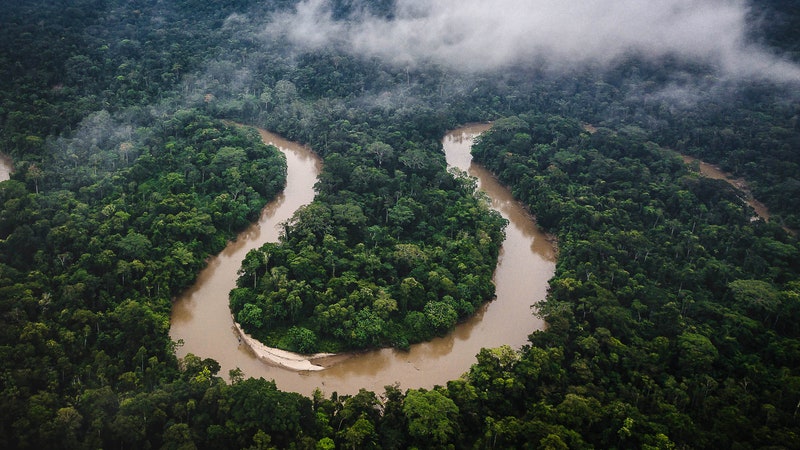 The record-breaking drought is forcing Kenya to confront a controversial topic: whether the country should grow genetically modified (GM) crops. These are plants that have had genes from another organism inserted into their DNA to give them a new trait, such as disease or drought resistance. Although GM crops are completely safe to eat and are widely grown in the US, Canada, Brazil, and India, governments in many parts of the world, including Europe and East Africa, have pushed back against them.
The record-breaking drought is forcing Kenya to confront a controversial topic: whether the country should grow genetically modified (GM) crops. These are plants that have had genes from another organism inserted into their DNA to give them a new trait, such as disease or drought resistance. Although GM crops are completely safe to eat and are widely grown in the US, Canada, Brazil, and India, governments in many parts of the world, including Europe and East Africa, have pushed back against them.
That was the case in Kenya in 2012, when the cabinet banned them from being imported. The ban stayed in place until 2019, when the government allowed the importation of GM cotton engineered to be resistant against a pest called the cotton bollworm. And then in October 2022, the cabinet declared that it would allow farmers to grow pest-resistant GM maize—effectively ending the decade-long ban on GM crops in the country. Since 2015, fall armyworm moths have ravaged maize crops, by one estimate destroying a third of Kenya’s annual production.
In a statement released in October, the Kenyan cabinet said that GM maize would help improve the country’s food supply, relieving some of the pressure of the ongoing drought. The government ordered 11 tonnes of pest-resistant GM maize seeds that are widely grown in South Africa and have also been trialed in Kenya. But then, in February 2023, Kenya’s GMO regulator was barred from releasing the seeds after four separate legal complaints were lodged: three with Kenyan courts and one in the East African Court of Justice.
One complaint was filed by the Centre for Food and Adequate Living Rights (CEFROHT), a Ugandan environmental nonprofit. Others were lodged by the Kenyan Peasants League and Paul Mwangi, a Kenyan lawyer. CEFROHT says that the Kenyan decision has violated the East African Community Treaty, which requires East African countries to protect natural resources. Other groups are worried that cultivating GM maize will shift farmers’ focus away from indigenous crops. With planting season just around the corner, the future of GM crops in Kenya is in limbo until the courts make a decision.
Timothy Machi welcomed the GM ban being reversed. “Something we’ve been longing for so long as a country has finally come to fruition,” says Machi, Kenya lead at the development NGO RePlanet Africa, which campaigns to improve Africa’s food security. So when the news broke that the move had been challenged in court, Machi helped organize protests in Nairobi and in Kampala in neighboring Uganda. Across the two cities, some 200 scientists and campaigners marched in support of GM crops. They held signs that read “GMOs for food security” and promoted the hashtag “Let Kenya eat.”
Pro-GMO campaigners hope that bringing in pest-resistant crop varieties will help bolster the nation’s meager crop yields. Kenyan farms produce much less food than those in other countries. Per hectare, Kenya produces a third as much maize as Brazil, where GM maize is widely grown. Kenyan maize yields are also much lower than those of countries where GM maize is not grown, such as China and France. In Uganda, where politicians are considering introducing a bill prohibiting GMOs, yields are also lower than other major maize-growing countries. “We are not at our potential,” says Patricia Nanteza, Ugandan lead at RePlanet Africa.
Get WIRED + a tote
SUBSCRIBE NOW
MOST POPULAR
BUSINESS
The Mystery Vehicle at the Heart of Tesla’s New Master Plan
AARIAN MARSHALL
GEAR
All the Settings You Should Change on Your New Samsung Phone
JULIAN CHOKKATTU
SECURITY
This Hacker Tool Can Pinpoint a DJI Drone Operator’s Location
ANDY GREENBERG
BUSINESS
Amazon’s HQ2 Aimed to Show Tech Can Boost Cities. Now It’s Paused
ANNA KRAMER
Improving crop yields helps feed more people, but it’s also good for the environment. The more food that can be grown on each square kilometer of land, the less land that needs to be converted to agriculture. As you can see in this chart from Our World in Data, South Asia produces a lot more cereal crops today than it did in 1980—and all of this growth came from increased crop yields. It’s not using any more land to grow those crops than it was 40 years ago. In sub-Saharan Africa it’s the opposite story. The area is also producing more cereals than in 1980, but almost all of this growth has come from converting more land into farmland. Low crop yields mean that feeding more people comes at the expense of natural habitats.
GM crops might be one way to increase yields. In South Africa, GM maize fields produce 11.1 percent more per hectare on average than non-GM fields—extra maize that would have taken more than 2,000 square kilometers of extra farmland to produce using conventional seeds.
But there are other ways of raising crop yields. Farms in sub-Saharan Africa use much less irrigation, machinery, and fertilizer than those in the developed world. In Uganda, around 17 percent of the maize harvest is lost during storage due to pests and mold. All of these things make land less productive—and some come with their own downsides. Getting more food out of the land is a big problem, and there is no silver bullet.
“Why not supply water, ensure that there is good infrastructure and good storage facilities, so that whatever is produced doesn’t go to waste,” says Hellen Dena, a spokesperson at Greenpeace Africa. “It’s just a matter of the government putting measures in place to ensure that they increase agricultural productivity.” Critics of GM crops argue that reversing the ban will just increase Kenya’s reliance on other countries and large multinational companies that sell GM seeds.
But for now, anything that can increase Kenya’s output of food is a good idea. Maize yields in the country have barely increased in the past 30 years, and climate change is putting its already stretched agricultural system under increased pressure. “All the maize plantations which we planted, they’ve dried even before they’ve produced anything,” says Magondo. When the government lifted the ban on GM cotton in 2019, Magondo was one of the first farmers to plant the crop. Now he says he’s using much less pesticide and harvesting more cotton than he used to. If GM maize is eventually allowed in Kenya, Magondo says he’ll be the first in line to plant the seeds in his fields.
Nanteza is confident that the legal blocks against Kenya’s GM maize will be overturned. A date for the hearings hasn’t been set yet, but whatever the outcome, she says that the debate over GM won’t be won or lost in the courts. Ultimately, it will be the people of East Africa who decide whether they want to grow, and eat, these foods.
Lire l’article complet sur : www.wired.com



Leave A Comment